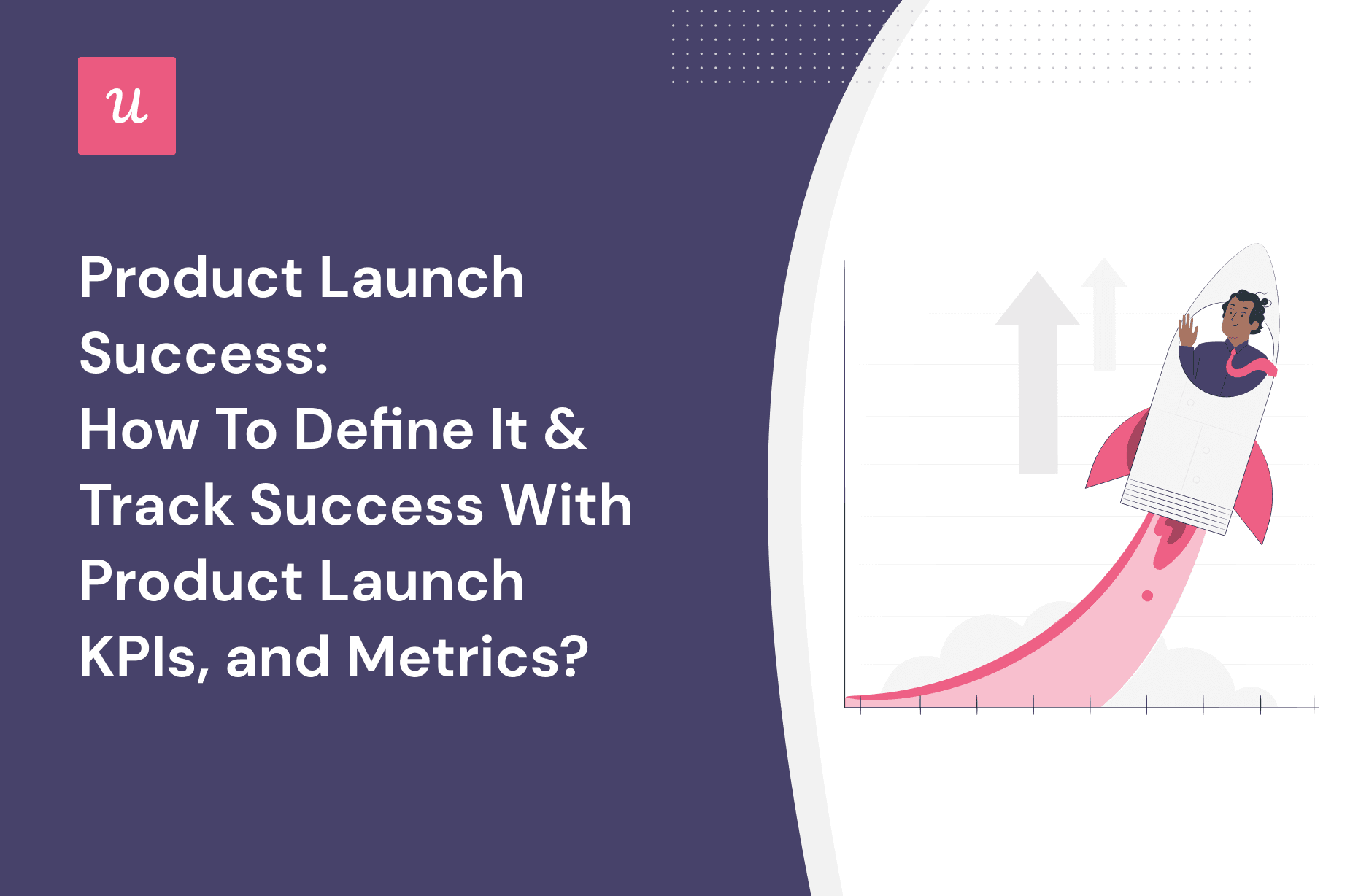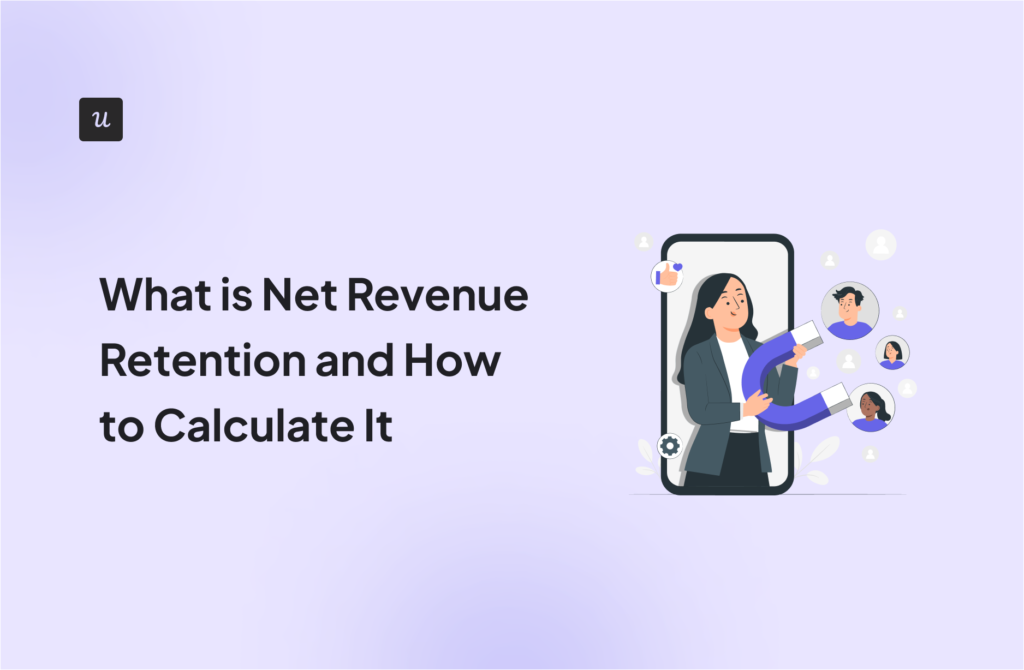
Product Launch Success: How To Define It & Track Success With Product Launch KPIs, and Metrics?
Try Userpilot Now
See Why 1,000+ Teams Choose Userpilot

What is a product launch?
In SaaS, a product launch refers to the process of introducing a new or upgraded solution, be it a product or feature, to the market. It takes a company’s collective effort to plan, develop, test, and promote the product before the launch.
What are the phases of a product launch?
The critical product launch process involves a series of phases and strategies to ensure your product’s success. There are three main phases you should consider:
- Pre-launch phase: This phase includes activities like market research, product development, product testing, etc. The goal is to ensure your product is ready for launch and can fulfill the needs of your target audience.
- Launch phase: It revolves around the actual launch date of your product or feature. It includes marketing, advertising, and promotional activities to reach the target audience. You need to generate interest and drive sales by creating awareness and buzz around the product launch, as early adopters are your key potential customers.
- Post-launch phase: During this phase, you need to monitor the performance of your product, collect customer feedback, and make the necessary improvements. Your primary focus should be on ensuring customer satisfaction and finding opportunities for future product development to retain existing customers and attract new ones.

Why is a successful product launch essential for a SaaS company?
Product launch is crucial for any business as it shows what value your company can bring to the target market.
While you build anticipation for the product during the pre-launch phase, you can gather valuable feedback from early users and create momentum for establishing a foothold for your company in the market.
Product launch managers should use this opportunity to drive more revenue by increasing brand awareness and bringing in many new customers.
How do you determine the success of product launches?
The success of a product launch depends on various factors such as product demand, target market, pricing, distribution, promotion, product quality, etc. Since these factors are different for each company, you should focus on the ones important for your product when evaluating the launch’s success.
Your product management team should review the goals it sets and then track results to check the progress toward objectives. It can easily do so by following steps and checklists for launching a product.
Another essential step in determining the success of a product launch is communicating the launch effectively through various means, like product launch announcement emails.
Key KPIs and metrics to measure product launch success
Now that you know the ins and outs of product launches, let’s go through the key KPIs and metrics to measure product launch success.
Pre-launch phase metrics
Here are some essential metrics you should consider during the pre-launch phase.
Number of sign-ups to the product waiting list
The number of sign-ups on the product waiting list is a critical metric that provides valuable insights into the level of interest in the product and helps you forecast the potential success of the product launch.
A good strategy you can use is to create buzz and excitement around your product before the launch through announcement marketing. You can create a product waiting list where interested ones can sign up with their email addresses. Then, you can use the emails to notify them before the official product launch events.
You can also offer exclusive perks, like early bird discounts and early access to new features, to those who sign up early on the waiting list and share it with others. It gives them the incentive to join the waiting list and allows you to have more new users who will be your potential paying customers.
Those new prospective customers can also give you feedback to help you tweak your product before the launch.

Number of registrations from referrals
Referral marketing is a powerful tool for driving product adoption and boosting a product’s popularity during the pre-launch phase. And the number of referral registrations (also known as the viral coefficient or K-factor) is one of the most popular referral marketing metrics.
The number of registrations from referrals or K-factor is the ratio of new users referred by existing users and those on your product waiting list. Word-of-mouth (WOM) can be a powerful tool for you, and measuring the K-factor shows how much benefit you get from it.
Suppose 50 out of 200 users refer your product to a friend or colleague in their first month. Then your K-factor is 50/200, or 0.25.
To keep up with SaaS industry standards, try maintaining a K-factor of 0.15 to 0.25.

Launch phase metrics
You must keep an eye on the product launch metrics to avoid any stumbling blocks that can make product launches fail. Let’s see how you can do it.
Customer acquisition cost
Customer acquisition cost (CAC) estimates how much it costs to get a new customer. It helps you understand the efficiency of your efforts to acquire a new customer for your new product.
This critical launch phase metric indicates how much you spend in your product launch campaign through various marketing and sales efforts. It compares various channels to acquire new customers.
You can calculate CAC by dividing the total sales and marketing expenses by the number of new customers you acquire in a given period.
Suppose your new product’s total sales and marketing expenses are $10,000, and you acquired 200 customers. Your CAC is (10,000/200) or $50.
SaaS businesses try to lower CAC by targeting a 3:1 LTV: CAC ratio.

Sign-ups to PQL conversion rate
Sign-ups to PQL conversion rate is the percentage of your sign-ups that convert into product-qualified leads (PQLs). It lets you measure the performance of your marketing funnel KPIs and lead generation and qualification efforts.
To calculate the sign-ups to PQL conversion rate, divide the number of PQLs by the number of sign-ups in a specific period and multiply the ratio by 100.
Assume you had 1000 sign-ups for the last product, and 350 are PQLs among them. Your conversion rate was (350/1000)*100 or 35%.
Although the SaaS industry standard for this metric varies depending on the products, businesses target a rate above 20 – 25%.

Post-launch phase metrics
Here are some critical metrics you should monitor and optimize even during the post-launch phase.
Customer activation rate
Customer activation rate is the percentage of customers who successfully activate and engage with your product.
It helps you understand the effectiveness of your product’s onboarding process and the likelihood of your customers reaching the Aha moment. You can also use it to improve user activation and optimize the activation engagement funnel.
You can calculate it by dividing the number of users who reached the activation milestone by the number of sign-ups in a specific period and multiplying by 100.
Consider 600 users reached the activation milestone, and 1000 signed up last month. Your activation rate was (600/1000)*100 or 60%.
The standard for customer activation rates in the SaaS industry is generally above 40%.

Trial to paid conversion rate
Trial-to-paid conversion rate is the percentage of your trial users who convert into paying customers.
With it, you can see if your new product’s free and paid trial offerings convert enough customers and make necessary adjustments to boost the conversion rate.
To calculate it, divide the number of converted trial users by the total number of trial users within the same period, and multiply by 10.
Suppose you have 1000 trial users and 650 converted into paying customers. Your trial-to-paid conversion rate is (650/1000)*100, or 65%.
SaaS companies attempt to keep the average trial-to-paid conversion rate above 15%.

Customer Engagement Score
Customer engagement score (CES) measures the level of engagement and interaction of customers with your product.
It helps you identify the points in the customer journey where your customers engage the most. You can optimize them by increasing user engagement and driving revenue through expansion opportunities.
Firstly, find the total event value by multiplying the impact by the events occurring in a specific period. You can then determine the CES by adding every total event value.

Customer retention rate
The customer retention rate is the percentage of customers you retain over a period.
With it, you can determine how well your new product resonates with the target audience and if it effectively retains customers. If you can improve the retention rate, you can automatically attain long-term success with your product.
To calculate it, divide the number of paying customers at the end of a period by the total number of customers at the beginning and multiply by 100.
Suppose you had 3,000 customers at the beginning of this month and have 750 paying customers now. Your retention rate is (750/3000)*100 or 25%.
Generally, SaaS businesses target a retention rate of around or above 90%.

Customer Satisfaction Score
The customer satisfaction score measures how satisfied your customers are with your product.
It helps you evaluate the effectiveness of your product in meeting customer expectations and ensuring customer satisfaction. You can learn if you are putting your efforts into the right places and then make necessary changes to improve your product.
By sending a customer satisfaction survey, you can ask customers to rate their satisfaction on a scale of 1 to 10. Then calculate the satisfaction score by dividing the number of happy customers by the number of customers asked.
The SaaS industry standard for satisfaction score is 8 or above out of 10.

Net Promoter Score
Net promoter score (NPS) measures how likely your customers are to recommend your product to others.
It helps you understand the customer potential and potential for word-to-mouth promotion due to your product’s performance. Using it with NPS follow-up questions, you can identify areas for improvement and optimize your efforts to increase customer loyalty.
You can calculate the NPS score by subtracting the percentage of detractors (respondents with 6 or below) from the percentage of promoters (respondents with 9 or 10).
For example, 59% of your respondents gave your product a score of 9 or 10, and 17% gave it 6 or below. Your NPS is (59-17) or 42.
The SaaS industry standard for NPS scores is around 40.

How to track product launch success with Userpilot?
Userpilot is a code-free solution that lets you utilize its wide range of features to ensure a successful launch.
You can track in-app customer engagement and feature usage and segment customers as per how they use your product.
It also lets you create and send microsurveys to gauge customer sentiment. You can also measure customer satisfaction and customer loyalty with it.
For mobile product launches, Userpilot empowers you to onboard and engage mobile app users by creating personalized messaging, push notifications, and surveys.
Combining these features with advanced real-time analytics gives you a valuable tool to monitor your product launch’s success, identify areas requiring more attention, and make data-driven decisions to improve the launch.

Conclusion
The success of SaaS businesses largely depends on how impactful their product launches are.
Now you should know everything on how to implement a product launch strategy in each phase and make it successful.
Want to track product launch success code-free? Book a Userpilot demo and see how you can do it.







